Grow Swiss Chard Easily, even if you think you have a black thumb! Have you ever dreamed of stepping outside your back door and harvesting vibrant, nutritious greens for a delicious salad or side dish? Well, dream no more! This isn’t just another gardening article; it’s your personal guide to unlocking the secrets of cultivating beautiful and bountiful Swiss chard, right in your own backyard.
Swiss chard, with its colorful stalks and crinkled leaves, has a rich history, dating back to ancient Greece and Rome, where it was prized for its medicinal properties and culinary versatility. For centuries, it has been a staple in Mediterranean diets, and now, it’s ready to become a star in your garden too! But why should you bother learning to grow Swiss Chard Easily? In today’s world, where access to fresh, healthy produce can be a challenge, growing your own food is more important than ever. Plus, store-bought chard often lacks the vibrant flavor and freshness of homegrown varieties.
I’m here to show you that growing Swiss chard doesn’t have to be intimidating. Whether you have a sprawling garden or just a small balcony, I’ll share simple, effective DIY tricks and hacks that will have you harvesting gorgeous chard in no time. Say goodbye to expensive grocery store greens and hello to fresh, flavorful, and organically grown Swiss chard from your very own garden!
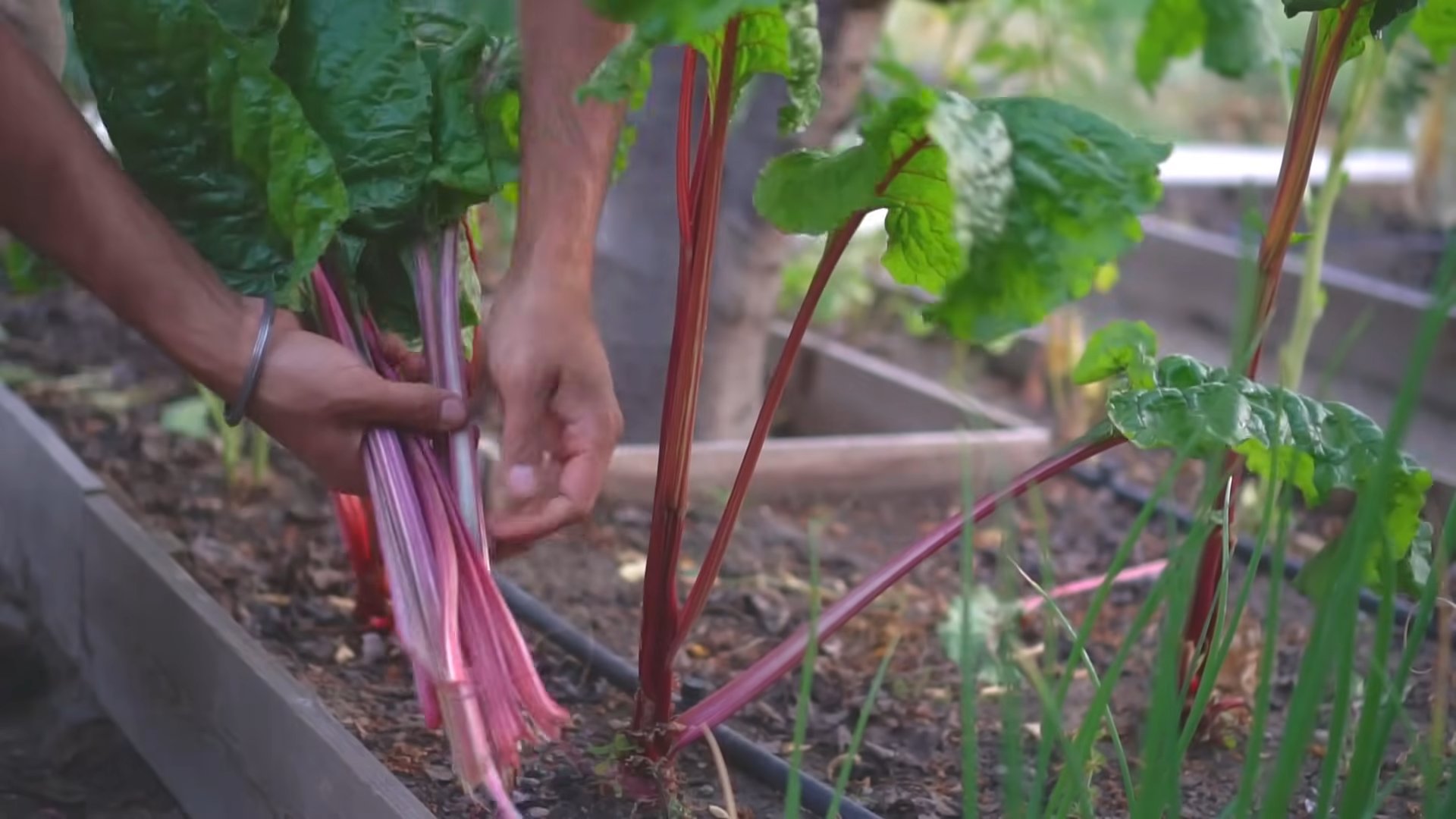
Growing Swiss Chard: A Beginner’s Guide to Bountiful Harvests
Hey there, fellow gardening enthusiasts! Today, I’m super excited to share my secrets to growing vibrant and delicious Swiss chard right in your own backyard (or even in containers!). Swiss chard is one of my absolute favorite veggies to grow. It’s incredibly versatile in the kitchen, packed with nutrients, and surprisingly easy to cultivate. Trust me, even if you’re a complete beginner, you can totally nail this!
Why Grow Swiss Chard?
Before we dive into the nitty-gritty, let’s talk about why you should even bother growing Swiss chard. Here’s a quick rundown:
* Nutrient Powerhouse: Swiss chard is loaded with vitamins A, C, and K, as well as minerals like magnesium, potassium, and iron. It’s basically a superfood!
* Easy to Grow: Seriously, this stuff is resilient. It tolerates a wide range of conditions and is relatively pest-resistant.
* Continuous Harvest: Unlike some veggies that you harvest once and they’re done, Swiss chard allows for continuous harvesting. You can snip off the outer leaves as needed, and the plant will keep producing more.
* Beautiful Colors: With its vibrant stems in shades of red, yellow, orange, and white, Swiss chard adds a pop of color to your garden. It’s as pretty as it is delicious!
* Versatile in the Kitchen: You can use Swiss chard in salads, soups, stir-fries, smoothies, and so much more. The possibilities are endless!
Getting Started: What You’ll Need
Okay, let’s gather our supplies. Here’s what you’ll need to get your Swiss chard growing adventure underway:
* Swiss Chard Seeds: You can find these at most garden centers or online. I personally love the ‘Bright Lights’ variety for its colorful stems, but there are plenty of other great options like ‘Fordhook Giant’ or ‘Lucullus’.
* Potting Soil (if growing in containers): Choose a high-quality potting mix that drains well.
* Garden Soil (if growing in the ground): Make sure your soil is well-draining and rich in organic matter. Amend it with compost or aged manure if needed.
* Compost or Aged Manure: This will provide essential nutrients for your plants.
* Gardening Gloves: To keep your hands clean and protected.
* Watering Can or Hose: For watering your plants.
* Hand Trowel or Garden Fork: For planting and amending the soil.
* Optional: Row covers to protect your seedlings from pests.
* Optional: Fertilizer (organic is best) to give your plants an extra boost.
Step-by-Step Guide to Growing Swiss Chard
Alright, let’s get our hands dirty! Here’s a detailed guide to growing Swiss chard, from seed to harvest:
1. Starting Seeds (Indoors or Outdoors)
You can start Swiss chard seeds either indoors or directly in the ground. Starting indoors gives you a head start, especially if you live in a colder climate.
* Starting Indoors:
1. Sow Seeds: Fill seed trays or small pots with potting mix. Sow seeds about ½ inch deep and 1 inch apart.
2. Water Gently: Water the soil gently to moisten it.
3. Provide Light: Place the trays in a sunny location or under grow lights.
4. Keep Moist: Keep the soil consistently moist but not waterlogged.
5. Transplant: Once the seedlings have developed a few sets of true leaves (usually after 4-6 weeks), they’re ready to be transplanted outdoors.
* Direct Sowing Outdoors:
1. Prepare the Soil: Choose a sunny spot in your garden and amend the soil with compost or aged manure.
2. Sow Seeds: Sow seeds about ½ inch deep and 1 inch apart in rows.
3. Water Gently: Water the soil gently to moisten it.
4. Thin Seedlings: Once the seedlings emerge, thin them to about 6-12 inches apart. This will give them enough space to grow.
2. Transplanting Seedlings (If Starting Indoors)
If you started your seeds indoors, it’s time to transplant them to their permanent home in the garden or in containers.
1. Harden Off Seedlings: Before transplanting, you’ll need to “harden off” the seedlings. This means gradually exposing them to outdoor conditions over a period of about a week. Start by placing them outside for a few hours each day, gradually increasing the amount of time they spend outdoors.
2. Prepare the Planting Area: Choose a sunny spot in your garden or a large container (at least 12 inches in diameter). Amend the soil with compost or aged manure.
3. Dig Holes: Dig holes that are slightly larger than the root balls of the seedlings. Space the holes about 6-12 inches apart.
4. Gently Remove Seedlings: Carefully remove the seedlings from their trays or pots, being careful not to damage the roots.
5. Plant Seedlings: Place the seedlings in the holes and gently backfill with soil.
6. Water Thoroughly: Water the seedlings thoroughly after planting.
3. Caring for Your Swiss Chard Plants
Now that your Swiss chard plants are in the ground, it’s time to provide them with the care they need to thrive.
1. Watering: Water your Swiss chard plants regularly, especially during dry periods. Aim to keep the soil consistently moist but not waterlogged. Water deeply and less frequently, rather than shallowly and often.
2. Fertilizing: Swiss chard is a heavy feeder, so it benefits from regular fertilization. You can use an organic fertilizer or side-dress with compost or aged manure every few weeks.
3. Weeding: Keep the area around your Swiss chard plants free of weeds. Weeds compete with your plants for nutrients and water.
4. Mulching: Apply a layer of mulch around your plants to help retain moisture, suppress weeds, and regulate soil temperature.
5. Pest Control: Swiss chard is relatively pest-resistant, but it can sometimes be bothered by aphids, slugs, or snails. You can control these pests with organic methods, such as hand-picking, using insecticidal soap, or setting up slug traps. Row covers can also help protect your plants from pests.
4. Harvesting Your Swiss Chard
The best part! You can start harvesting Swiss chard leaves when they are about 6-8 inches long.
1. Harvest Outer Leaves: Use a sharp knife or scissors to cut off the outer leaves near the base of the plant.
2. Leave the Inner Leaves: Leave the inner leaves intact so that the plant can continue to produce more leaves.
3. Continuous Harvest: You can harvest Swiss chard continuously throughout the growing season. The more you harvest, the more the plant will produce!
4. Enjoy Your Harvest: Wash the leaves thoroughly and use them in your favorite recipes.
Troubleshooting Common Problems
Even with the best care, you might encounter a few challenges along the way. Here are some common problems and how to address them:
* Yellowing Leaves: This could be a sign of nutrient deficiency, overwatering, or underwatering. Make sure your soil is well-draining, and fertilize your plants regularly. Adjust your watering schedule as needed.
* Holes in Leaves: This could be caused by pests like slugs, snails, or cabbage loopers. Inspect your plants regularly and take action to control pests as needed.
* Bolting (Premature Flowering): This can happen when Swiss chard is exposed to hot weather. To prevent bolting, provide shade during the hottest part of the day and water your plants regularly.
Tips for Growing Swiss Chard in Containers
Growing Swiss chard in containers is a great option if you have limited space or if you want to grow it on a balcony or patio. Here are a few tips for success:
* Choose the Right Container: Select a container that is at least 12 inches in diameter and has drainage holes.
* Use High-Quality Potting Mix: Use a well-draining potting mix that is rich in organic matter.
* Water Regularly: Container plants tend to dry out more quickly than plants in the ground, so water them regularly.
* Fertilize Regularly: Container plants also need regular fertilization, as the nutrients in the potting mix will be depleted over time.
* Provide Sunlight: Place your container in a sunny location that receives at least 6 hours of sunlight per day.
Enjoying Your Homegrown
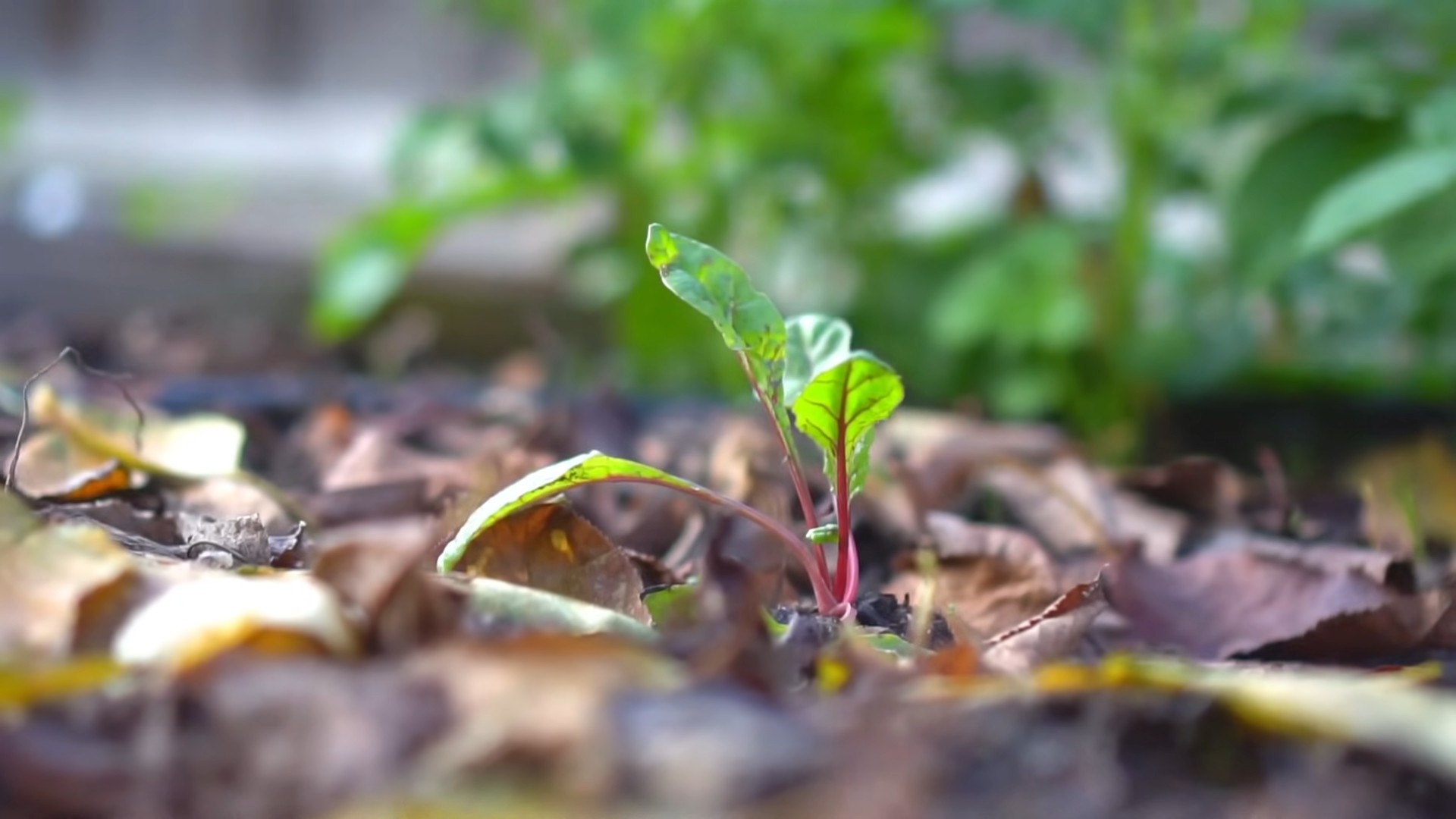
Conclusion
So, there you have it! Growing Swiss chard at home, even if you’re a complete beginner, is not only achievable but also incredibly rewarding. We’ve walked you through the simple steps, from seed to harvest, and hopefully dispelled any myths about it being a difficult vegetable to cultivate. But why should you bother with this DIY project?
Firstly, the taste. Freshly harvested Swiss chard from your own garden is simply incomparable to anything you can buy in a store. The vibrant, slightly earthy flavor is intensified, and the crisp texture is a delight. Plus, you know exactly what’s gone into growing it – no pesticides, no hidden chemicals, just pure, healthy goodness.
Secondly, the cost savings. While the initial investment in seeds and perhaps some potting mix might seem like a small expense, consider how much you spend on Swiss chard at the grocery store each week. Over time, growing your own will significantly reduce your grocery bill, especially if you succession plant to ensure a continuous harvest.
Thirdly, the health benefits. Swiss chard is a nutritional powerhouse, packed with vitamins, minerals, and antioxidants. By growing your own, you’re ensuring that you have access to a readily available source of these essential nutrients. You’re also more likely to consume it regularly when it’s right there in your backyard.
But the benefits extend beyond just taste, cost, and health. Gardening is a therapeutic activity that can reduce stress, improve your mood, and connect you with nature. Watching your Swiss chard seedlings sprout and grow into mature plants is a deeply satisfying experience. It’s a tangible reminder of your ability to nurture and create.
Ready to take your Swiss chard growing to the next level? Consider these variations:
* Container Gardening: If you’re short on space, Swiss chard thrives in containers. Choose a pot that’s at least 12 inches deep and wide to allow for adequate root growth.
* Companion Planting: Plant Swiss chard alongside other vegetables like onions, garlic, and carrots to deter pests and improve growth.
* Different Varieties: Experiment with different varieties of Swiss chard, such as ‘Bright Lights’ with its colorful stems or ‘Fordhook Giant’ for its large, dark green leaves.
* Succession Planting: Sow seeds every few weeks to ensure a continuous harvest throughout the growing season.
* Overwintering: In milder climates, you can overwinter Swiss chard by providing some protection from frost. This will give you an early harvest in the spring.
We truly believe that anyone can successfully grow Swiss chard at home with a little bit of effort and the right information. It’s a rewarding experience that will provide you with fresh, healthy, and delicious vegetables for months to come.
So, what are you waiting for? Grab some seeds, prepare your soil, and get growing! We’re confident that you’ll be amazed at how easy and enjoyable it is to cultivate your own Swiss chard.
And most importantly, we want to hear about your experience! Share your tips, tricks, and photos with us in the comments below. Let’s create a community of Swiss chard enthusiasts and learn from each other. Happy gardening! Let us know how your **grow Swiss chard** journey goes.
Frequently Asked Questions (FAQ)
What is the best time of year to plant Swiss chard?
The best time to plant Swiss chard depends on your climate. In cooler climates, you can start seeds indoors 4-6 weeks before the last expected frost or direct sow seeds outdoors after the last frost. In warmer climates, you can plant Swiss chard in the fall for a winter or spring harvest. Swiss chard prefers cooler temperatures, so avoid planting it during the hottest months of summer.
How much sunlight does Swiss chard need?
Swiss chard needs at least 6 hours of sunlight per day to thrive. However, in hotter climates, it can benefit from some afternoon shade to prevent the leaves from scorching. If you’re growing Swiss chard in containers, you can easily move them to a shadier location during the hottest part of the day.
What kind of soil is best for Swiss chard?
Swiss chard prefers well-drained soil that is rich in organic matter. Amend your soil with compost or aged manure before planting to improve its fertility and drainage. The ideal soil pH for Swiss chard is between 6.0 and 7.5.
How often should I water Swiss chard?
Water Swiss chard regularly, especially during dry periods. Aim to keep the soil consistently moist but not waterlogged. Water deeply at the base of the plants to encourage deep root growth. Mulching around the plants can help to retain moisture and suppress weeds.
How do I harvest Swiss chard?
You can begin harvesting Swiss chard when the leaves are about 6 inches long. Harvest the outer leaves first, leaving the inner leaves to continue growing. You can harvest Swiss chard continuously throughout the growing season. Simply cut the leaves off at the base of the plant, leaving about 2 inches of stem.
What are some common pests and diseases that affect Swiss chard?
Some common pests that affect Swiss chard include aphids, flea beetles, and leaf miners. You can control these pests by handpicking them off the plants, using insecticidal soap, or covering the plants with row covers. Common diseases that affect Swiss chard include leaf spot and downy mildew. Prevent these diseases by providing good air circulation, avoiding overhead watering, and removing any infected leaves.
Can I eat the stems of Swiss chard?
Yes, the stems of Swiss chard are edible and delicious! They have a slightly different flavor and texture than the leaves, but they are equally nutritious. You can cook the stems in the same way that you would cook the leaves, or you can sauté them separately.
How do I store Swiss chard?
Store Swiss chard in the refrigerator in a plastic bag or container. It will keep for up to a week. You can also freeze Swiss chard for longer storage. To freeze Swiss chard, blanch it in boiling water for 2 minutes, then plunge it into ice water to stop the cooking process. Drain the Swiss chard well and freeze it in freezer bags or containers.
Is Swiss chard a cut-and-come-again vegetable?
Yes, Swiss chard is an excellent cut-and-come-again vegetable. This means that you can harvest the outer leaves as needed, and the plant will continue to produce new leaves throughout the growing season. This makes it a very productive and rewarding vegetable to grow.
Can I grow Swiss chard indoors?
Yes, you can grow Swiss chard indoors, but it will require a sunny location and adequate lighting. Place your Swiss chard plants near a south-facing window or provide them with supplemental grow lights. Make sure to water them regularly and fertilize them every few weeks.
What are some creative ways to use Swiss chard in cooking?
Swiss chard is a versatile vegetable that can be used in a variety of dishes. You can sauté it with garlic and olive oil, add it to soups and stews, use it in quiches and frittatas, or even blend it into smoothies. The possibilities are endless! Experiment with different recipes and find your favorite ways to enjoy this nutritious and delicious vegetable.
How do I prevent my Swiss chard from bolting (going to seed)?
Bolting is when a plant prematurely flowers and goes to seed, which can make the leaves bitter. To prevent Swiss chard from bolting, especially in warmer climates, provide it with some afternoon shade and ensure that it is adequately watered. Also, harvest the leaves regularly to encourage continued leaf production.
Is Swiss chard safe for pets to eat?
While Swiss chard is generally safe for humans, it’s best to consult with your veterinarian before feeding it to your pets. Some vegetables can be toxic to animals, and it’s always better to be safe than sorry.
What are the nutritional benefits of Swiss chard?
Swiss chard is a nutritional powerhouse, packed with vitamins A, C, and K, as well as minerals like magnesium, potassium, and iron. It’s also a good source of fiber and antioxidants. Eating Swiss chard can help to improve your vision, boost your immune system, strengthen your bones, and protect against chronic diseases.

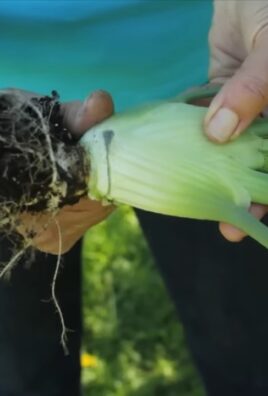
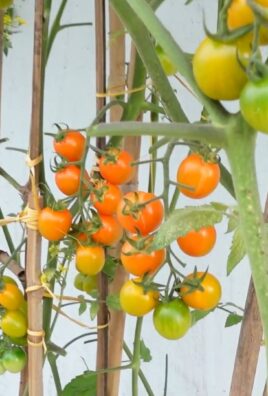
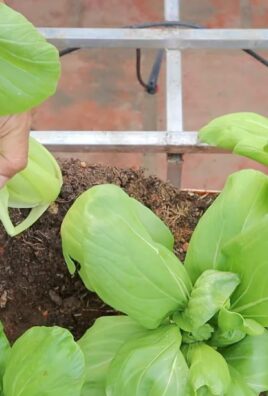
Leave a Comment